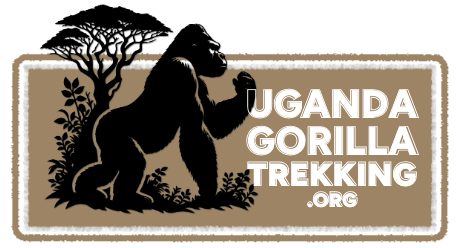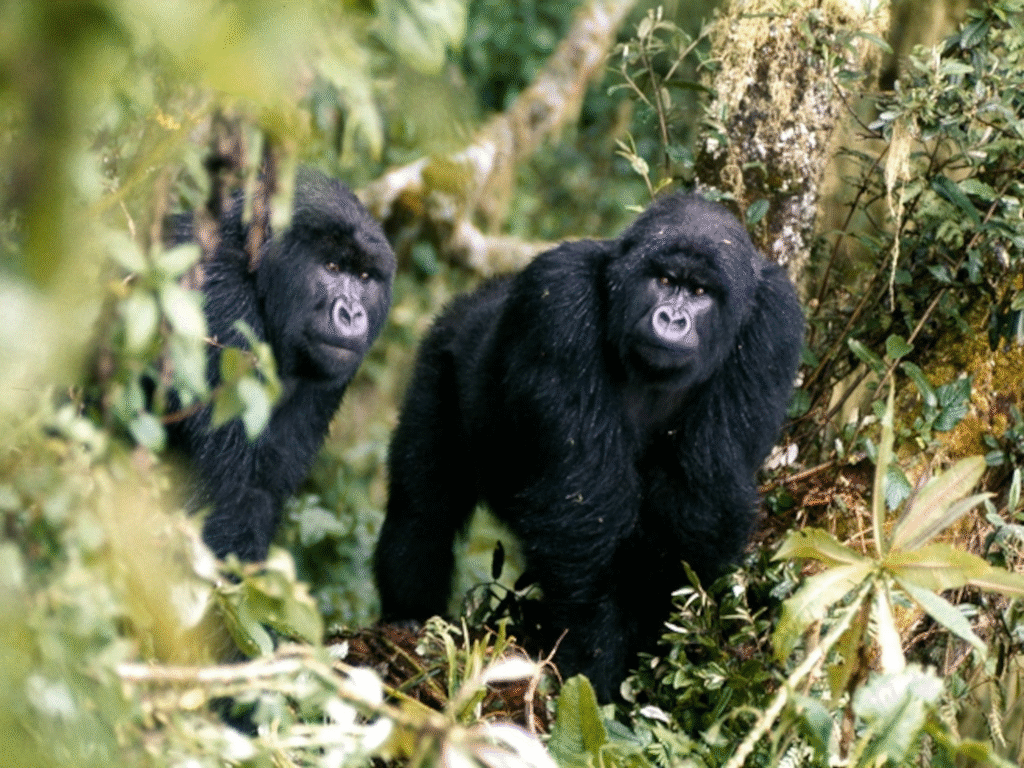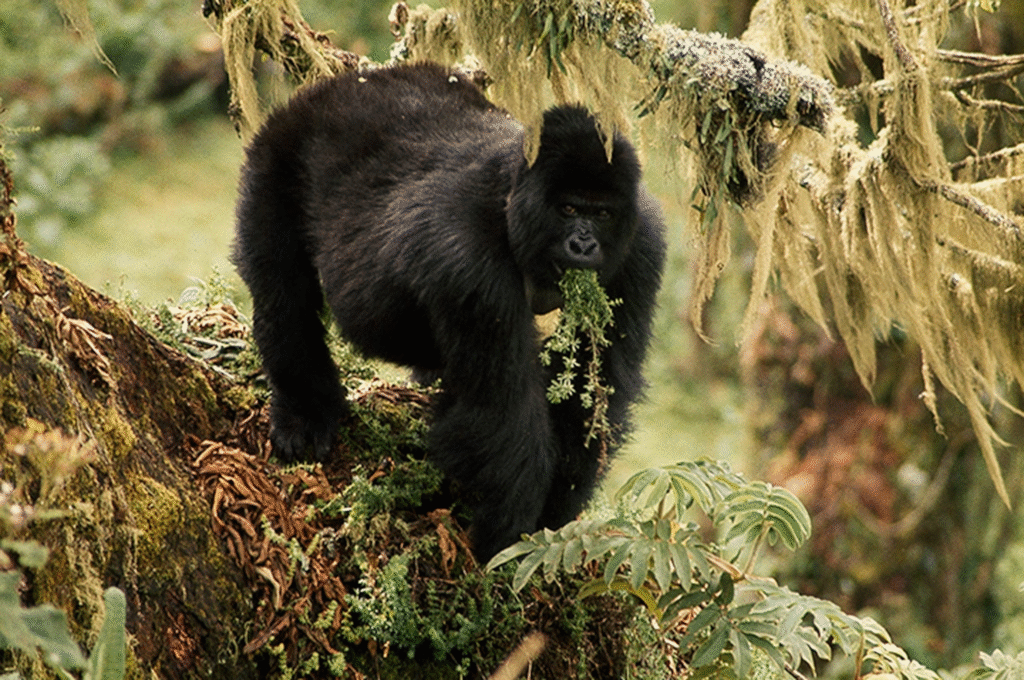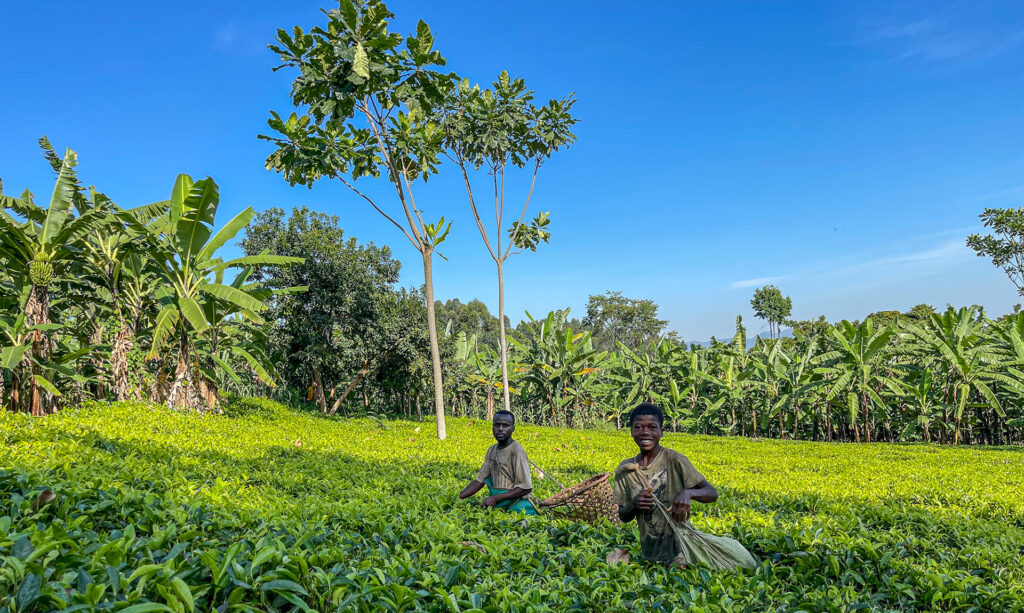Where the soul of the forest whispers in the mist
Uganda is a vibrant and diverse country tucked away in East Africa, where nature thrives in all its drama and beauty. Often called the Pearl of Africa, Uganda lives up to its name through an unmatched combination of wildlife, landscapes, and cultural depth. From the snow-capped peaks of the Rwenzori Mountains to the rolling savannahs of Queen Elizabeth National Park, and from the lush depths of Bwindi’s rainforest to the mirror-like calm of Lake Victoria, the country offers a full spectrum of African wonders in one compact destination.
But Uganda’s true magic isn’t just in its scenery — it’s in its spirit. It’s found in the resilience of its people, the warmth of its rural communities, and the rich traditions that continue to thrive in everyday life. Whether you’re tracking gorillas through misty jungle trails, navigating the Nile’s powerful flow, or sharing a sunset with elephants in the wild, Uganda leaves you with a sense of intimacy and authenticity that’s hard to match. It is more than a country — it’s an experience that stirs your soul and stays with you long after you’ve left.
So lace up your boots, grab your camera, and prepare to meet the wild — this is where your gorilla trekking dreams and unforgettable safari adventures truly begin.
Truly Iconic Highlights in Uganda
Trek through Bwindi’s mystical rainforest and meet the endangered mountain gorillas in their breathtaking natural home.
Encounter mountain gorillas and golden monkeys on Mgahinga’s misty volcanic trails, where culture and alpine wildlife thrive together.
Unwind after your trek with a peaceful canoe ride across Lake Bunyonyi, Uganda’s most tranquil and scenic highland lake.
Enhance your gorilla trekking safari with an optional chimpanzee encounter in Uganda’s lush forests, adding depth and diversity to your primate adventure
About Uganda – The Pearl of Africa Unveiled
Uganda is not just a place you visit. It’s a place that visits you back—with a softness of soul, a thunder of nature, and the heartbeat of a continent that never lets go.
Nestled deep in the heart of East Africa, Uganda stands as a land of contrasts and harmony. It is a country where lush rainforests give way to vast savannahs, where ancient kingdoms thrive alongside modern cities, and where the echo of drumming ceremonies blends with the quiet presence of mountain gorillas hidden in misty hills.
This is the Pearl of Africa, a title not simply earned by beauty, but by how deeply it touches those who come here. In this guide, we invite you to understand Uganda—not just by its geography, but through its people, its past, and its powerful present.
Introduction & Quick Facts
Official Name: Republic of Uganda
Capital City: Kampala
Population: ~49 million (2024 estimate)
Area: 241,038 km²
Official Languages: English and Swahili
Major Ethnic Groups: Baganda, Banyankole, Basoga, Bakiga, Iteso, Langi, Acholi, and over 50 more
Religion: Christianity (82%), Islam (13%), Indigenous beliefs
Currency: Ugandan Shilling (UGX)
Time Zone: East Africa Time (UTC +3)
National Parks: 10, including Bwindi Impenetrable, Mgahinga, Queen Elizabeth, and Murchison Falls
Key Attractions: Mountain gorillas, chimpanzees, Lake Victoria, River Nile, Rwenzori Mountains, wildlife safaris
Uganda’s Land – A Diverse Natural Mosaic
Uganda’s landscape is breathtakingly diverse. Located on the East African Plateau, it is bordered by Kenya, South Sudan, the Democratic Republic of Congo, Rwanda, and Tanzania. It sits at the crossroads of East and Central Africa—both geographically and ecologically.
To the west, you’ll find the Rwenzori Mountains, also called the “Mountains of the Moon,” capped with snow and shrouded in mist. To the east lies Mount Elgon, an extinct volcano cloaked in bamboo forests and waterfalls. The vast inland sea of Lake Victoria dominates the south, while the River Nile bursts northward from its shores, thundering through Murchison Falls with stunning power.
In the southwest, the famous Bwindi Impenetrable Forest and Mgahinga Gorilla National Park harbor the endangered mountain gorilla. Northern Uganda gives way to Kidepo Valley National Park, a remote savannah known for its raw beauty and abundance of wildlife.
This variety of ecosystems makes Uganda one of the most biodiverse countries on Earth, and a dream for conservationists and nature lovers alike.
The People of Uganda – Unity in Diversity
Uganda is home to more than 50 ethnic groups, each with its own language, customs, and traditions. Despite this vast diversity, Ugandans are united by a strong sense of community and hospitality. Visitors are often struck by the genuine warmth and friendliness they encounter across the country.
The largest ethnic group is the Baganda, centered around the kingdom of Buganda in central Uganda. Other major groups include the Banyankole in the southwest, the Basoga in the east, and the Acholi and Langi in the north. Each group contributes unique music, dance, food, and spiritual practices to the nation’s cultural identity.
Language is a vibrant part of daily life. While English is the official language used in government and education, Luganda is widely spoken, especially in Kampala and surrounding areas. Swahili serves as a unifying language in trade and is increasingly promoted across East Africa.
Cultural Life – Where Tradition Meets Celebration
Uganda’s culture is a celebration of life—expressed through drumming, dance, storytelling, and ceremony. Weddings, births, harvests, and even funerals are marked by elaborate rituals. Traditional music features instruments like the adungu (harp), engoma (drum), and endongo (lyre), while dance varies widely across ethnic groups.
Visitors to Uganda often have the chance to witness cultural dances, such as:
The Bakisimba dance of the Baganda
The Runyege-Ntogoro of the Banyoro
The Larakaraka courtship dance of the Acholi
Spirituality remains central in Ugandan life. Christianity and Islam dominate, but many communities also practice indigenous beliefs—honoring ancestors, nature, and sacred sites.
The Batwa people, indigenous forest dwellers of southwestern Uganda, have a rich spiritual connection to the forest. Though displaced from their ancestral lands, many Batwa now participate in community tourism, sharing their traditions with travelers in respectful and educational ways.
Uganda’s Economy – Agriculture, Growth & Resilience
Uganda’s economy is largely driven by agriculture, which employs over 70% of the population. Coffee is the country’s top export, followed by tea, fish, maize, and sugar. In recent years, tourism has emerged as a significant contributor—especially thanks to gorilla trekking and eco-tourism initiatives.
Uganda is also rich in natural resources, including gold, copper, and recently discovered oil reserves. These resources, if managed wisely, could transform the country’s economic future.
However, like many developing nations, Uganda faces challenges—such as youth unemployment, climate change impacts, and infrastructure gaps. The government, in partnership with private investors and NGOs, continues to implement ambitious projects in education, transport, energy, and digital innovation.
Government & Leadership
Uganda is a presidential republic, with a three-branch government comprising the Executive (President and Cabinet), Legislature (Parliament), and Judiciary. Since 1986, President Yoweri Kaguta Museveni has been the head of state.
The country has experienced periods of political tension and reform. While there is a functioning multi-party system, elections and press freedom have occasionally drawn criticism. Nevertheless, Uganda continues to strive for stability, development, and regional cooperation as a member of the East African Community (EAC).
History – From Ancient Kingdoms to Modern Nation
Uganda’s story is long and layered. For centuries, powerful kingdoms like Buganda, Bunyoro, Toro, and Ankole dominated the region—each with organized governance, trade, and rich oral histories.
Colonized by the British in the late 19th century, Uganda became a protectorate in 1894 and gained independence in 1962. The decades that followed were marked by political instability, most infamously under Idi Amin (1971–1979), whose brutal dictatorship led to the deaths of hundreds of thousands.
In 1986, stability began to return under President Museveni. Since then, Uganda has made major strides in health, education, and economic growth, though questions of governance and democratic process remain.
Uganda Today – A Country Rising
Today’s Uganda is resilient, youthful, and ambitious. Over 75% of the population is under the age of 30. With a growing tourism sector, strong conservation programs, and digital innovation on the rise, Uganda is positioning itself as a leader in East Africa.
Tourism is playing a vital role in this transformation. Gorilla trekking, in particular, not only draws thousands of visitors each year—it funds conservation, anti-poaching patrols, and local development projects. When you visit Uganda, you don’t just witness the wild—you support its future.
Why Visit Uganda?
Because no other country gives you so much in a single journey. Here, you can:
Trek through rainforests to sit among endangered mountain gorillas
Raft the Nile, the world’s longest river
Explore remote savannahs teeming with lions and elephants
Stand on the Equator, sleep under stars, and drink coffee with locals
Learn from cultures, not just see them
And most of all, feel the pulse of Africa in a place that welcomes you with arms wide open.
More Information About Uganda to Know.
Uganda is a culturally rich and naturally diverse country, home to vibrant traditions, stunning landscapes, and welcoming people. From its deep history to its thriving wildlife and modern identity, Uganda truly stands as the Pearl of Africa.
In the Realm of Giants – Bwindi & Mgahinga in Frames.
Wander through an elegant gallery capturing Uganda’s most exclusive gorilla sanctuaries, where ancient forests cradle the last mountain gorillas in a world of mist, mystery, and majesty.
Essential Planning Tips for Visiting Uganda’s National Parks.
Get ready for the wild heart of Africa with expert travel tips on when to visit, what to pack, where to go, and how to make the most of your safari across Uganda’s breathtaking national parks.
Why Uganda for Gorilla Trekking?
Uganda is not just a destination — it's the very soul of gorilla trekking. With over half of the world’s remaining mountain gorillas calling its misty forests home, Uganda offers the rarest encounters in their most authentic setting. Here, your journey is not rushed or crowded. Instead, you’re guided by experienced rangers through pristine jungles where gorillas live as they always have — wild, free, and magnificent
From insider travel insights to unforgettable trekking guides, our blog is your trusted path into Uganda’s wild heart — connecting you with mountain gorillas, breathtaking landscapes, and the soul-stirring adventures that make this land unlike any other.





